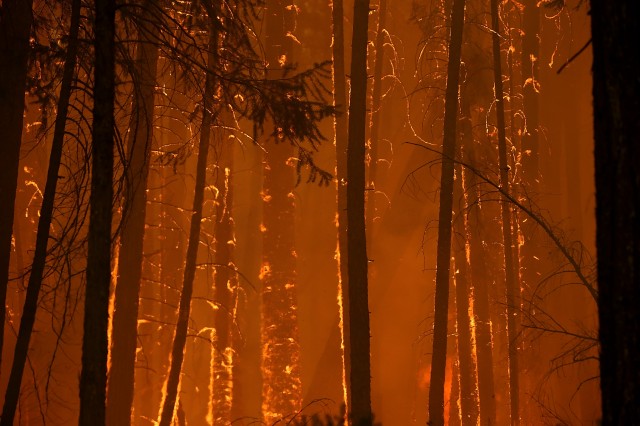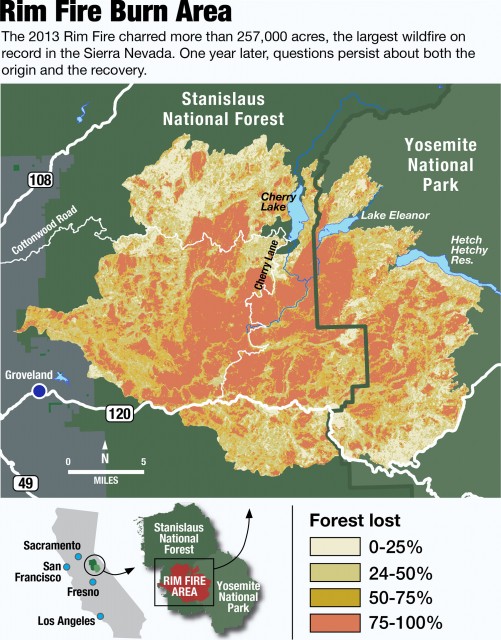
A 32-year-old man from the Tuolumne County town of Columbia has been charged by a federal grand jury with starting the devastating Rim Fire. Federal prosecutors say that Keith Matthew Emerald faces a four-count indictment.
The August 2013 conflagration -- the third largest in California history -- lasted for nine weeks and burned more than 250,000 acres, including large section of Yosemite National Park and the Stanislaus National Forest. It was the biggest fire ever in the Sierra Nevada Mountains.
According to the indictment, Emerald kindled a fire on Aug. 17, 2013 in the Stanislaus National Forest and let it spread beyond his control, despite temporary fire restrictions that banned fires. He is also charged with lying to a federal agent by saying he did not start the fire.
Court documents indicate that Emerald was rescued by helicopter from the Clavey River canyon part of the Stanislaus National Forest -- near the place where the Rim Fire originated -- about an hour after the fire was reported. According to a press release, "Emerald was carrying bow hunting equipment with him and advised authorities that he had been on a solo hunting trip."
U.S. Attorney Benjamin B. Wagner, who announced the indictment jointly with U.S. Forest Service Pacific Southwest Regional Forester Randy Moore, stated: “The Rim Fire was one of the largest in California history and caused tremendous economic and environmental harm. While those harms cannot be undone, today we have brought criminal charges relating to the cause of that fire. I want to commend the Forest Service agents for their diligent and extensive investigation.”
